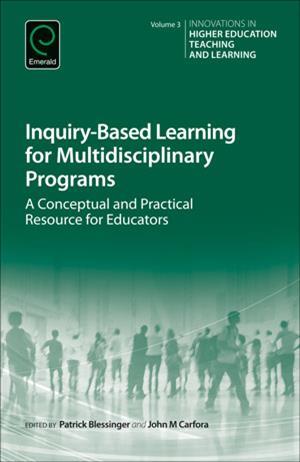Integrating IBL into the curricula

Patrick Blessinger and John M Carfora (eds)
Emerald Group Publishing
2015 | 456pp | £82.95 (HB)
ISBN 9781784418489
http://amzn.to/1PmLRYm
Continued interest in the inclusion of inquiry-based learning (IBL) in our curricula means we are always looking for good examples of how this can be applied in practice. This book presents a series of case studies on the integration of IBL at college and university level. While none are specific to chemistry, there is much to learn from implementations in other disciplines and across disciplines. For example, a chapter on developing students’ ‘digital selves’ explores their engagement with learning technologies and how this in turn affects institutional strategies.
A general theme of the book is that IBL is a process rather than a specific method. Implementations have focused around clustering a variety of teaching and learning processes around student inquiry for problem solving and addressing leading questions. The introduction to the book offers a useful theoretical framework for inquiry-based learning, orienting IBL around three components: exploration and investigation; authentic inquiry using contexts; and a research-based approach.
Who is the book suitable for? While it is likely to be of interest to anyone involved in designing IBL units, I think its particular focus on change will make it more suitable for curriculum designers and programme leaders. Particular caution regarding change is noted in the opening chapter: changing an approach is gradual and involves as much a change of mindset of the nature and purpose of teaching as it does in the mechanics of curriculum redesign. To that end, the book offers useful insights to those interested in or responsible for the management of change.









No comments yet